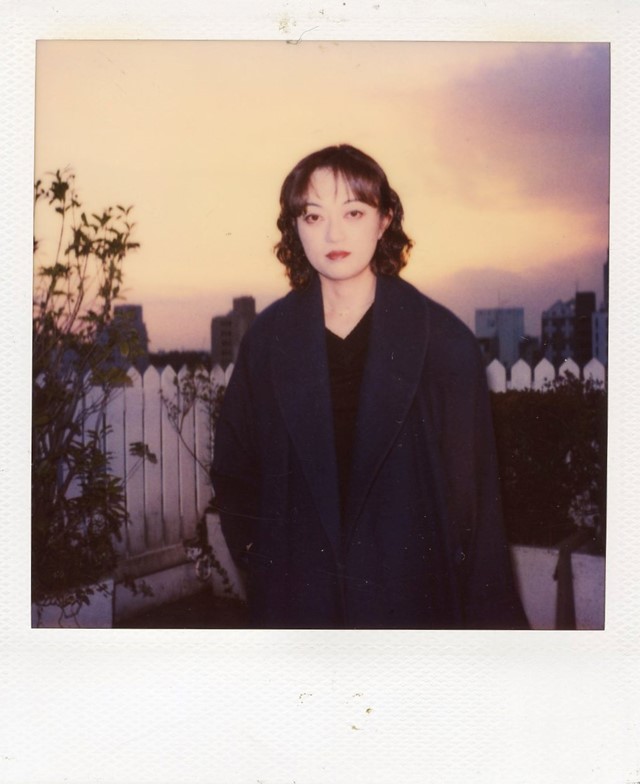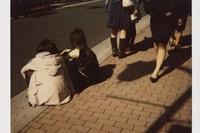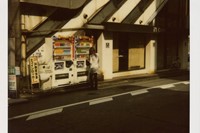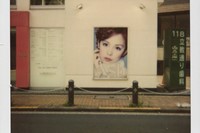The first joint showing of these two emblematic Japanese photographers in nearly two decades demonstrates their shared ethos of immediacy and intimacy
Instant film perfectly suits Nobuyoshi Araki: the anxious obsessive grasping for moments slipping just out of reach. Riding on the tails of the radical Japanese magazine Provoke in the early 1970s, he brought a whole new meaning to the “snapshot” genre, and his Polaroids have since formed an integral part of his snap-happy practice. In books such as Polaroid (1997), POLART (2009) and Kekkai (2014), all of Araki’s bread-and-butter subjects – Kinbaku (a Japanese art of bondage), Chiro the cat, cherry blossom, balcony sunsets, flowers, lizards – are at play, not to mention his id.
400 Polaroids, the current exhibition at San Francisco’s Ratio 3, is displaying 200 Araki Polaroids, dating from 2006 to 2014, on narrow white shelves. In the mix is Arakiri, an experimental series for which Araki took advantage of the Polaroid’s ability to both offer up instant images and to be physically manipulated. Invoking both the card-matching game karuta and the jidaigeki film Harakiri (1962) in reference to its famous seppuku scene (ritual suicide by cutting open the belly), Araki sliced and spliced Polaroids to form highly emotive juxtapositions.
“There is this visceral, haphazard quality to Araki’s diaristic approach to his life, activities and surroundings,” London gallerist Michael Hoppen tells AnOther. “His obsessive oeuvre is steeped in urban Japanese customs and beliefs, while his love for the Polaroid medium demonstrates his commitment to creating worlds that are physical and immediate. This is something which, for many contemporary artists today, has been usurped by Instagram and digital platforms. Yet these can fade away quickly, unlike physical pictures, which seem to be almost permanent. The haptic experience of looking at and holding Araki’s Polaroids – which were there at the same moment in time they were exposed and created – is an experience no screenshot can replace.”
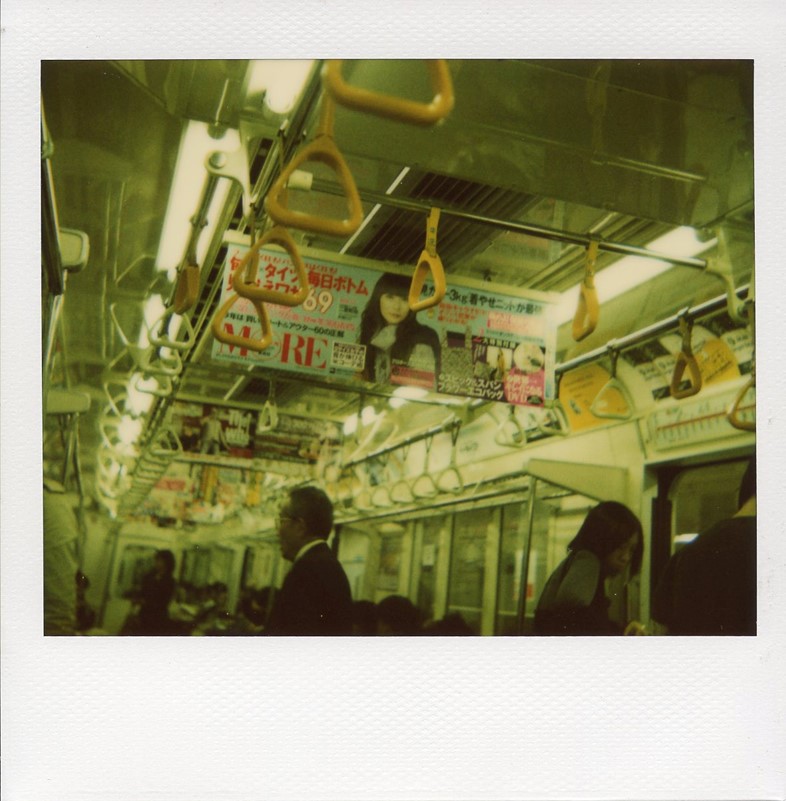
The exhibition’s 200 remaining Polaroids come courtesy of Daido Moriyama, making it the first time the two heavyweights of Japanese photography have showed together in nearly two decades. Few photographers have tested the limits of film as profoundly and dedicatedly as Moriyama has. As he once said: “Even if photography paper and developing fluids disappeared, I would go to the supermarket to buy eggs and vinegar and make cyanotype prints under sunlight.” When Polaroid announced the manufacturing of instant film would cease at the end of 2008, he said farewell that summer by doing what he does best: smoking out the sights and smells of Tokyo city.
The result was the homage bye-bye polaroid (2008), its title a nod to Moriyama’s landmark book Bye Bye Photography (1972). The 600 Polaroids were exhibited that same year at Taka Ishii Gallery in Tokyo. Reminiscing how Polaroid’s “Snap the shutter and get a photo in a minute!” tagline reminded him of the “Step in the front door and have rice in two minutes!” tagline of the instant rice TV commercial, Moriyama wrote the following in the accompanying catalogue: “For more than half a century, Polaroid turned the dream of instantly visible pictures into reality. I have to write this in the past tense because Polaroid ended the production of instant films this summer. So, I thought about holding an exhibition of Polaroids to say goodbye to the medium personally. Yes, ‘bye-bye Polaroid!’ There was nothing more exciting for me than taking Polaroids.”

Moriyama had the insight and sensibility to recognise that his daily perceptions would instantly be historical artefacts; he experienced the present as the past. It’s as if the Polaroid pictures were recorded on both sides, capturing the photographer’s inner sentiments and the outer world at the same time. The Polaroids on show offer the feeling of a time capsule, of a trove of personal memories, rendered poetic, melancholic and beautiful.
400 Polaroids by Nobuyoshi Araki and Daido Moriyama is on show at Ratio 3 in San Francisco until December 17.
